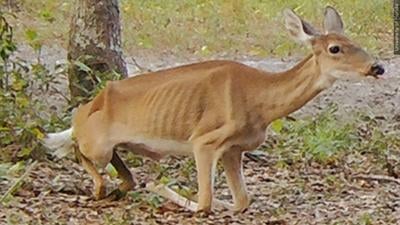FRANKFORT, Ky. (WEVV) — Following the detection of Chronic Wasting Disease, or CWD, in a deer in Posey County, Indiana, new measures are in effect for several local Kentucky counties.
An announcement from the Kentucky Department of Fish and Wildlife Resources says that new surveillance measures are now in effect for Henderson, Union, and Webster counties.
A CWD Surveillance Zone has been approved for the three counties, expanding the state’s existing surveillance area, which includes Ballard, Breckinridge, Calloway, Carlisle, Fulton, Graves, Hardin, Hickman, Marshall, Meade and McCracken counties. The zone brings specific regulations to help limit the spread of the disease among deer.
Key Regulations Now in Effect:
- Mandatory Testing: Hunters in Henderson, Union and Webster counties must bring deer harvested during the first three days of modern gun season (Nov. 8–10, 2025) to a staffed check station or CWD Sample Drop-Off site for testing.
- Carcass Transport Limits: Whole carcasses or high-risk parts from deer harvested in the zone cannot leave the three counties. Permitted items for transport include de-boned meat, clean skulls and teeth, antlers (with or without a clean skull cap), hides and finished taxidermy mounts. Carcasses of deer harvested outside the zone may be brought in.
- Rehabilitation Ban: The rehabilitation of deer is prohibited within the surveillance zone.
For the 2025–2026 deer season, under the authority of the commissioner, two key changes take effect in all counties that are designated within the CWD Surveillance Zone.
First, baiting is now allowed in all counties within the CWD Surveillance Zone, provided it is not distributed through contact feeders (e.g., troughs, funnels, and gravity feeders without spreading capabilities). This change overrides the previous baiting ban, aiming to give hunters more opportunities to harvest deer while reducing deer densities. A statewide prohibition of feeding is still effective from March 1 through July 31. Also, feeding and baiting is illegal on all Wildlife Management Areas.
While permitted with limitations, baiting promotes unnatural congregation of deer, increasing the risk of CWD transmission through saliva, urine and feces from infected animals. Hunters should weigh this risk before choosing to bait.
Second, to manage deer populations and improve disease monitoring, a special two-day antlerless-only gun season will be held Sept. 27–28, 2025, in all CWD Surveillance Zone counties. During this special season, hunters are required to drop off the head of harvested deer to a CWD Sample Drop-off site. Hunters may harvest any deer without visible antlers, including button bucks. However, no deer hunters—whether using firearms, bows or crossbows—may take an antlered buck in a CWD Surveillance Zone county during this weekend. Hunter orange requirements are in effect during this season.














